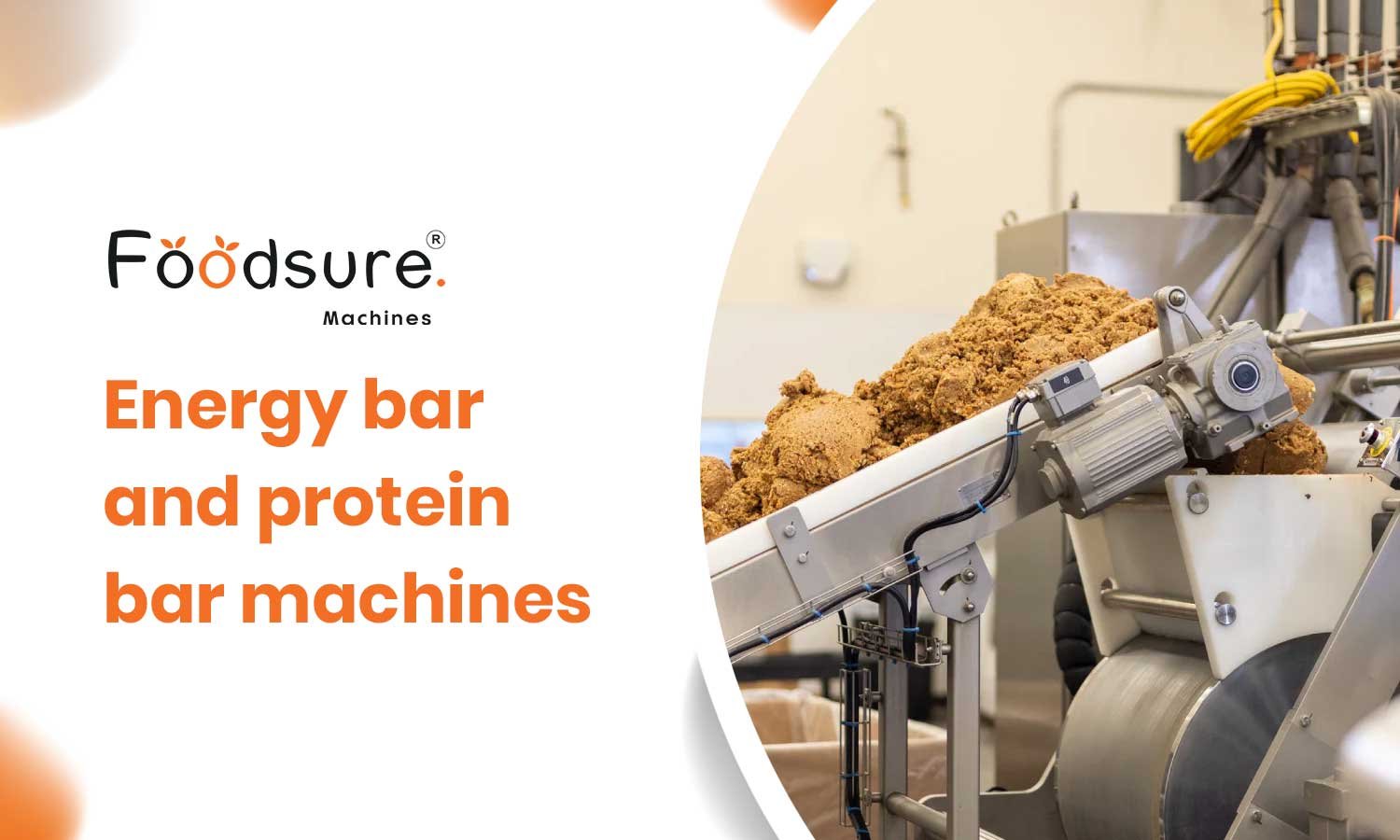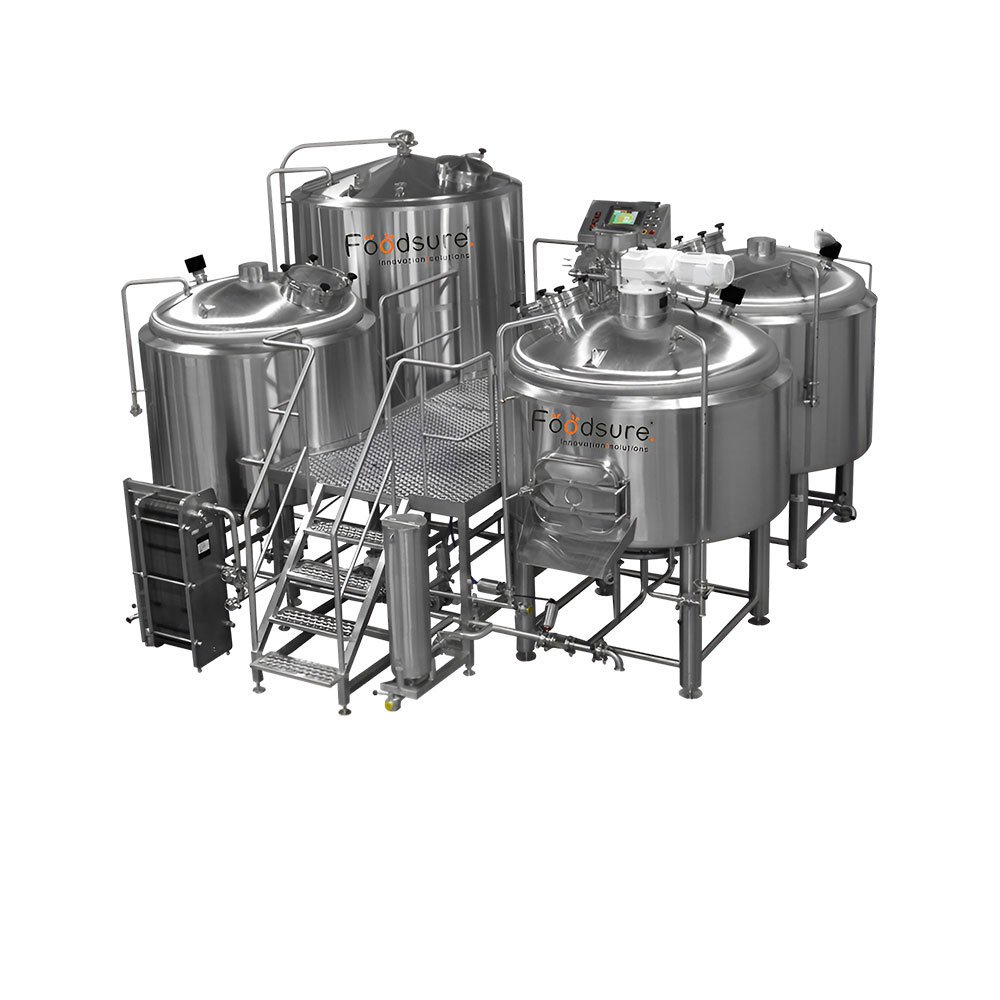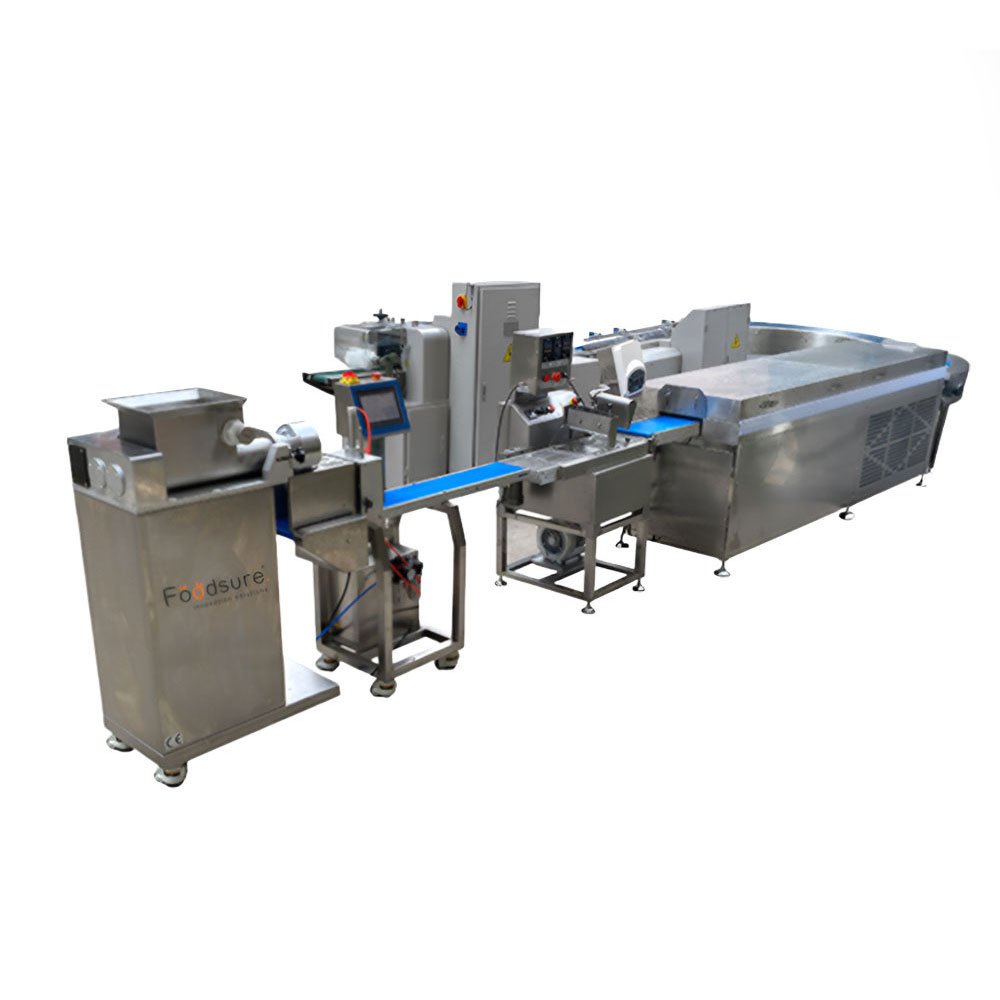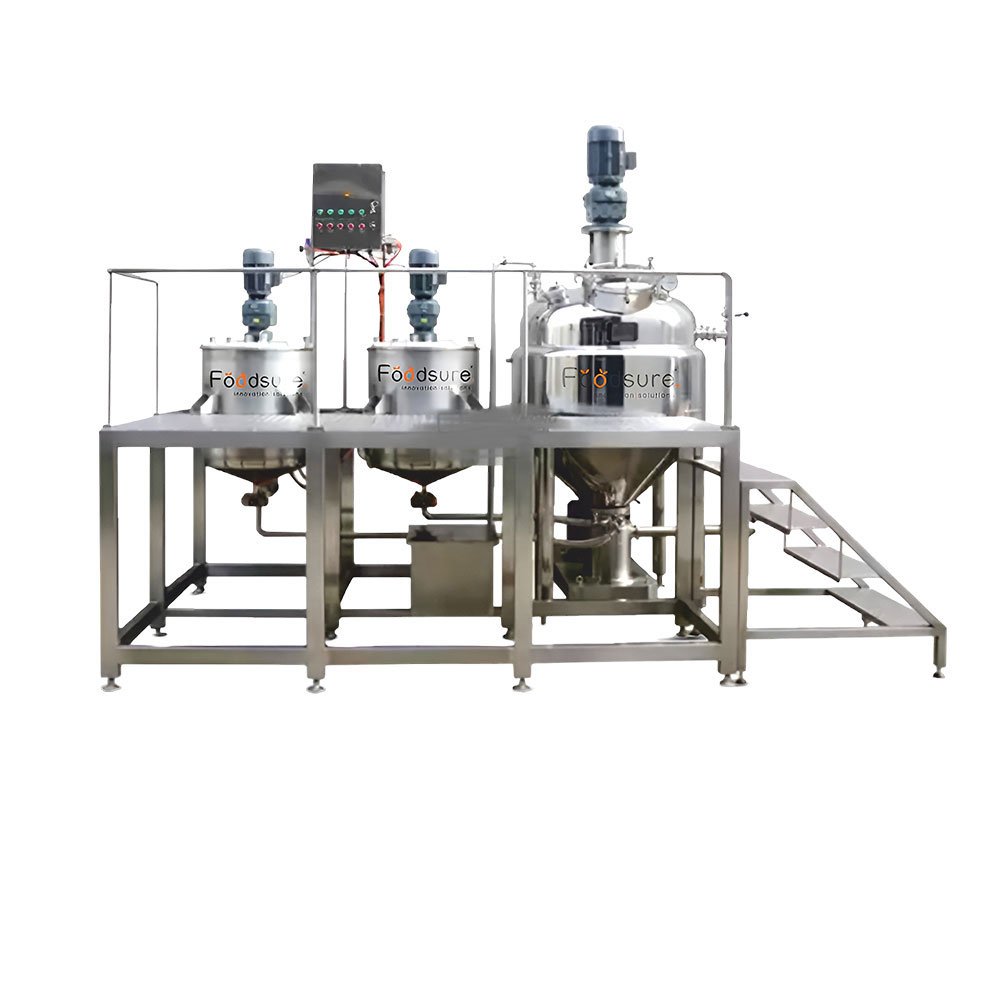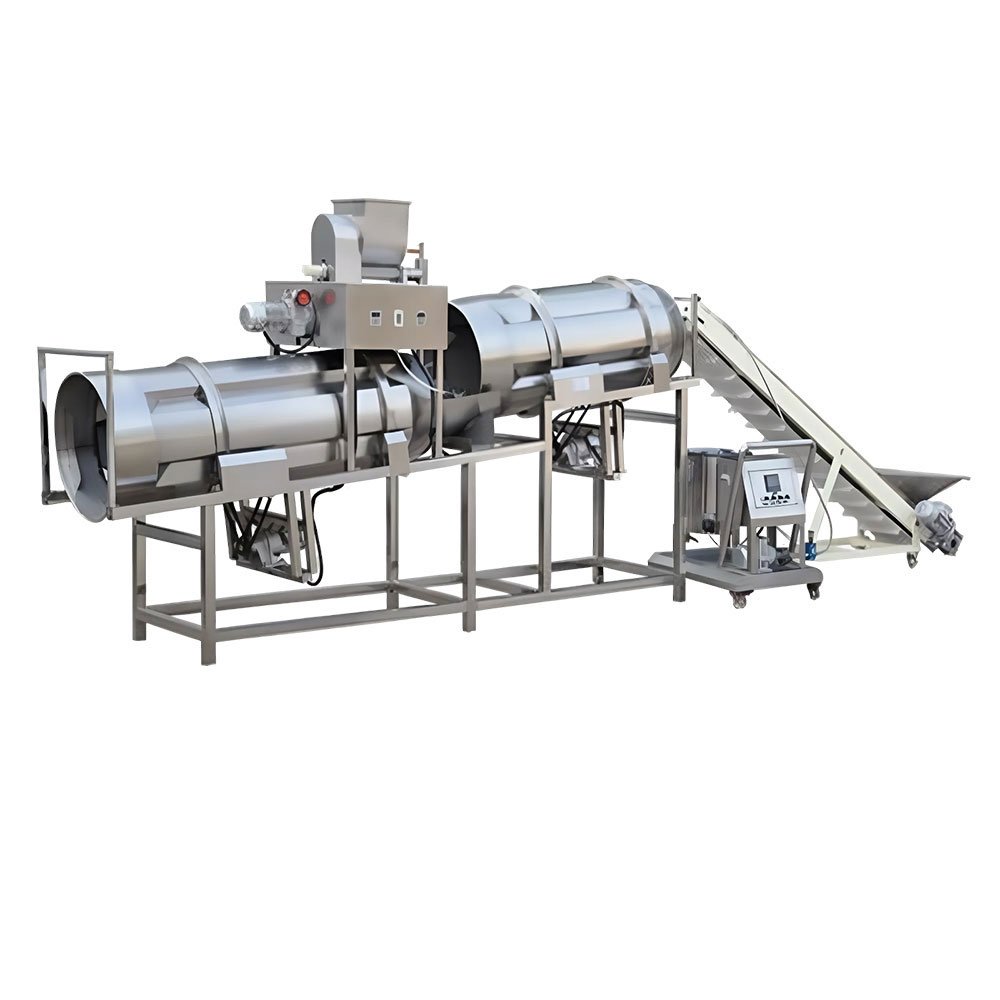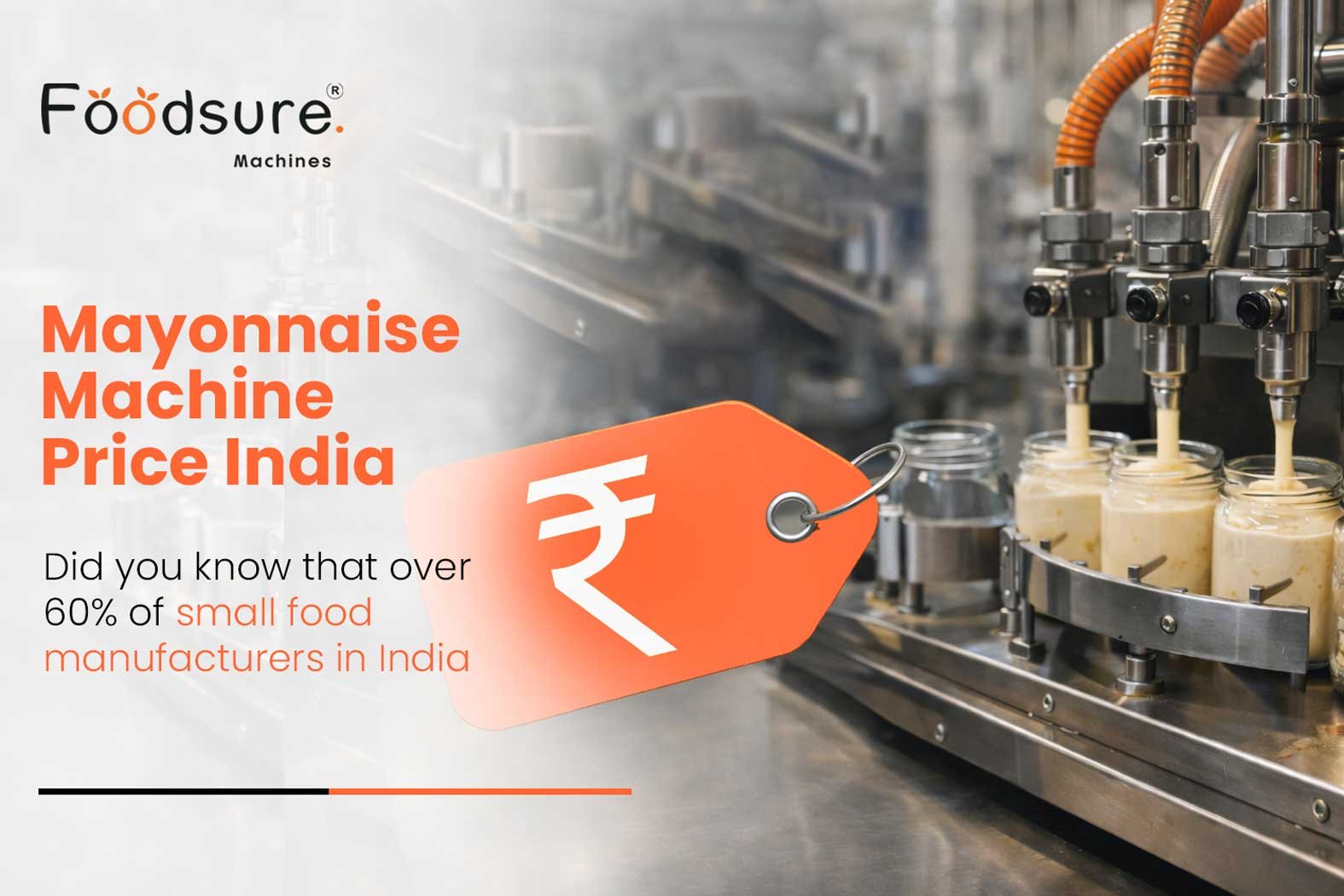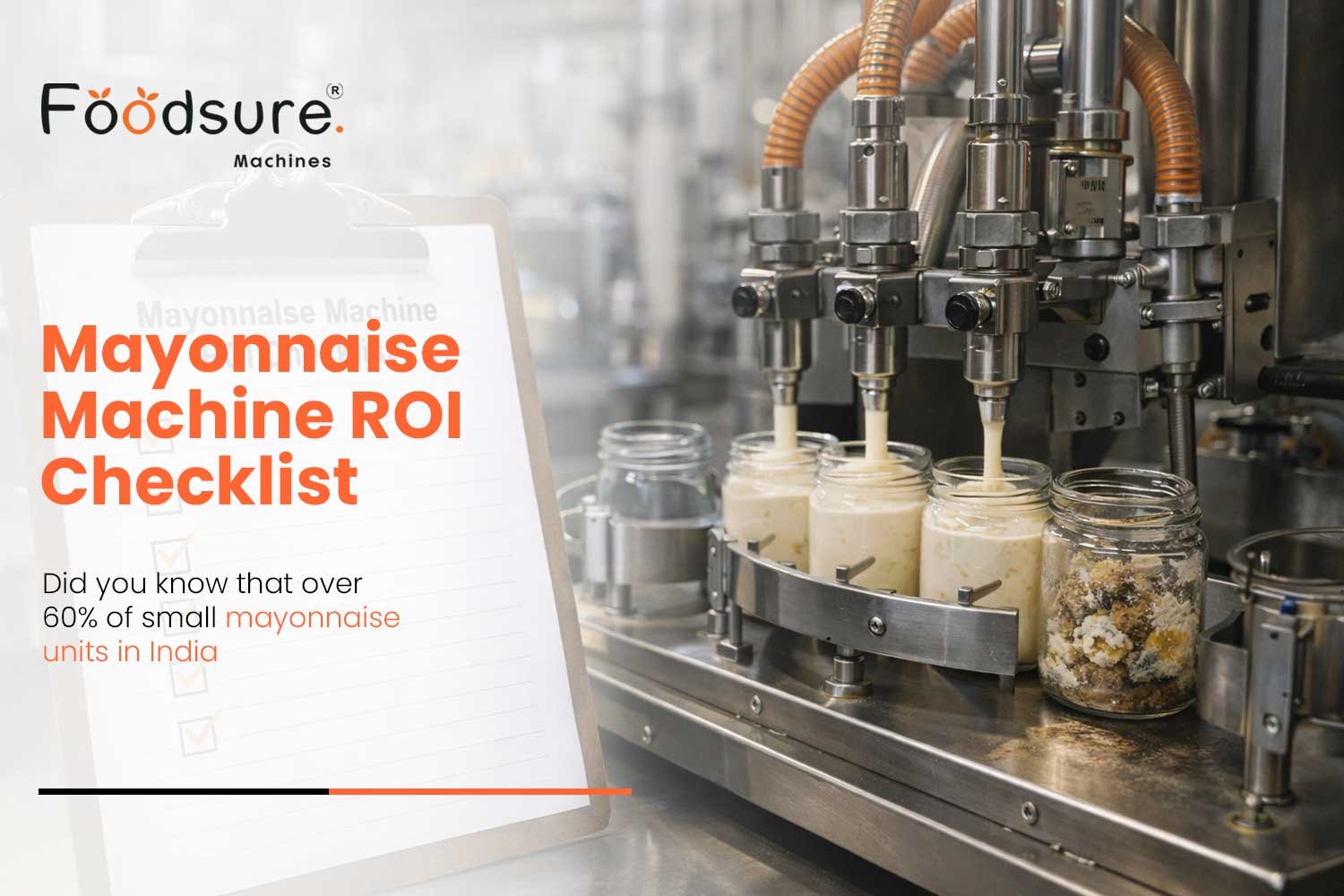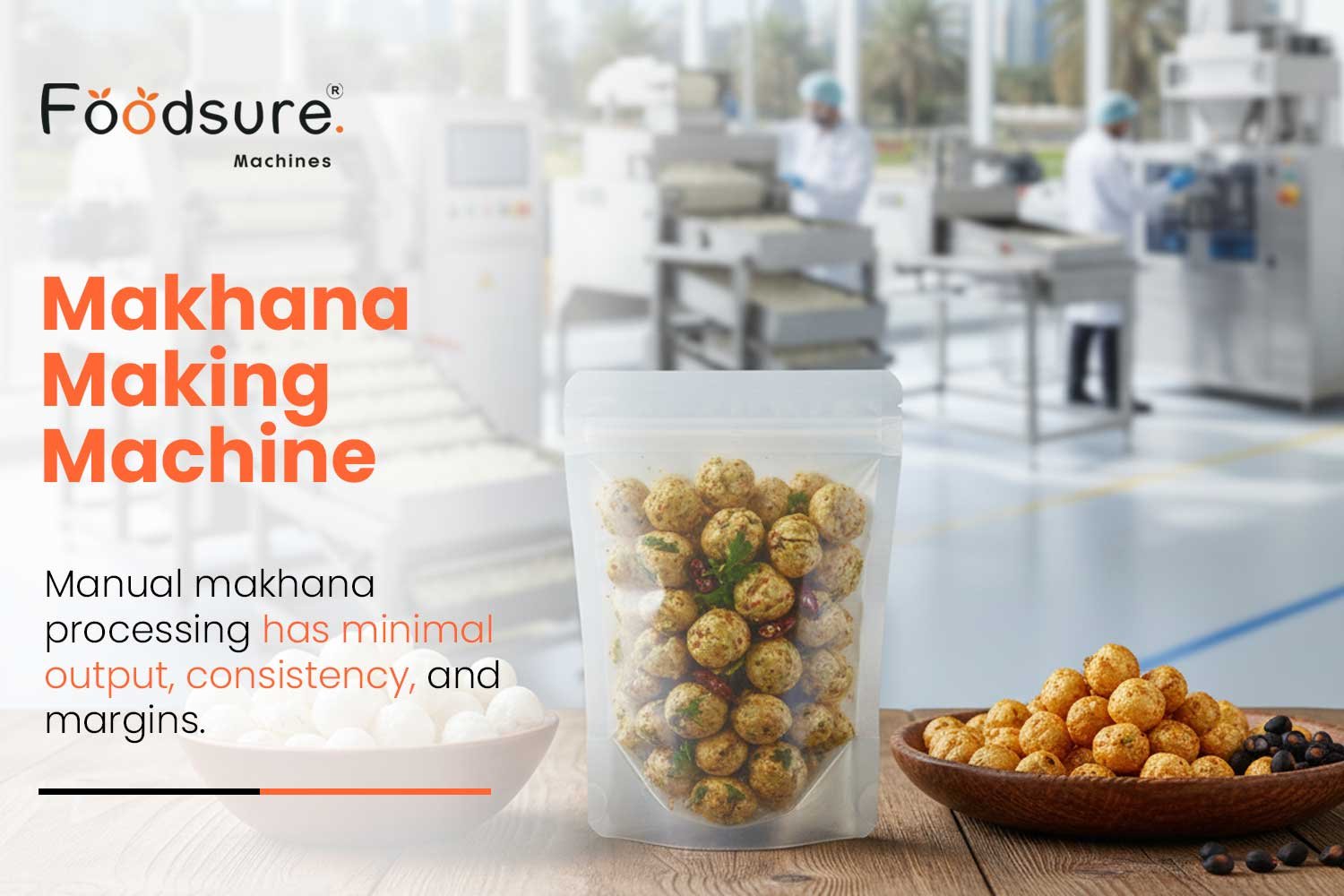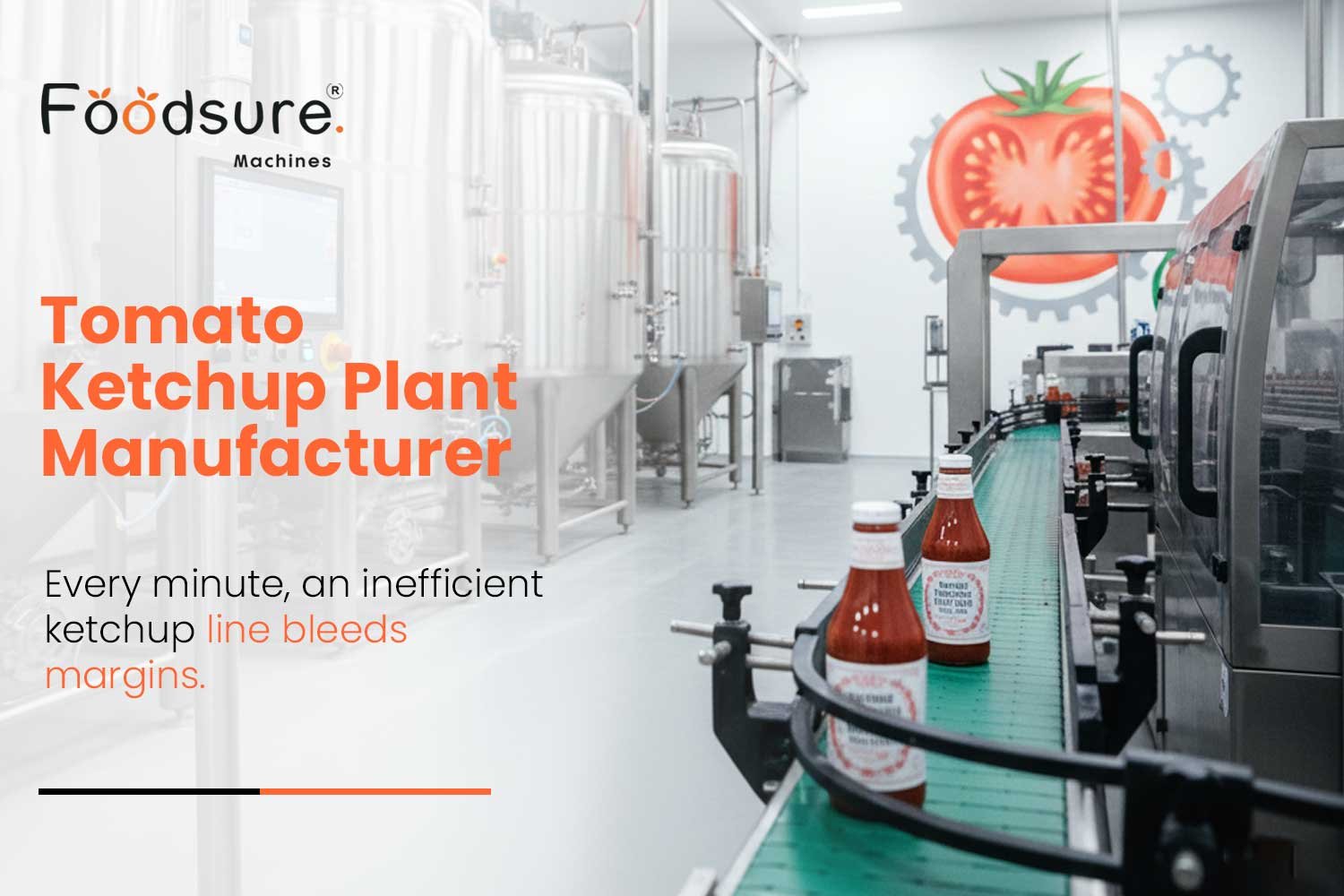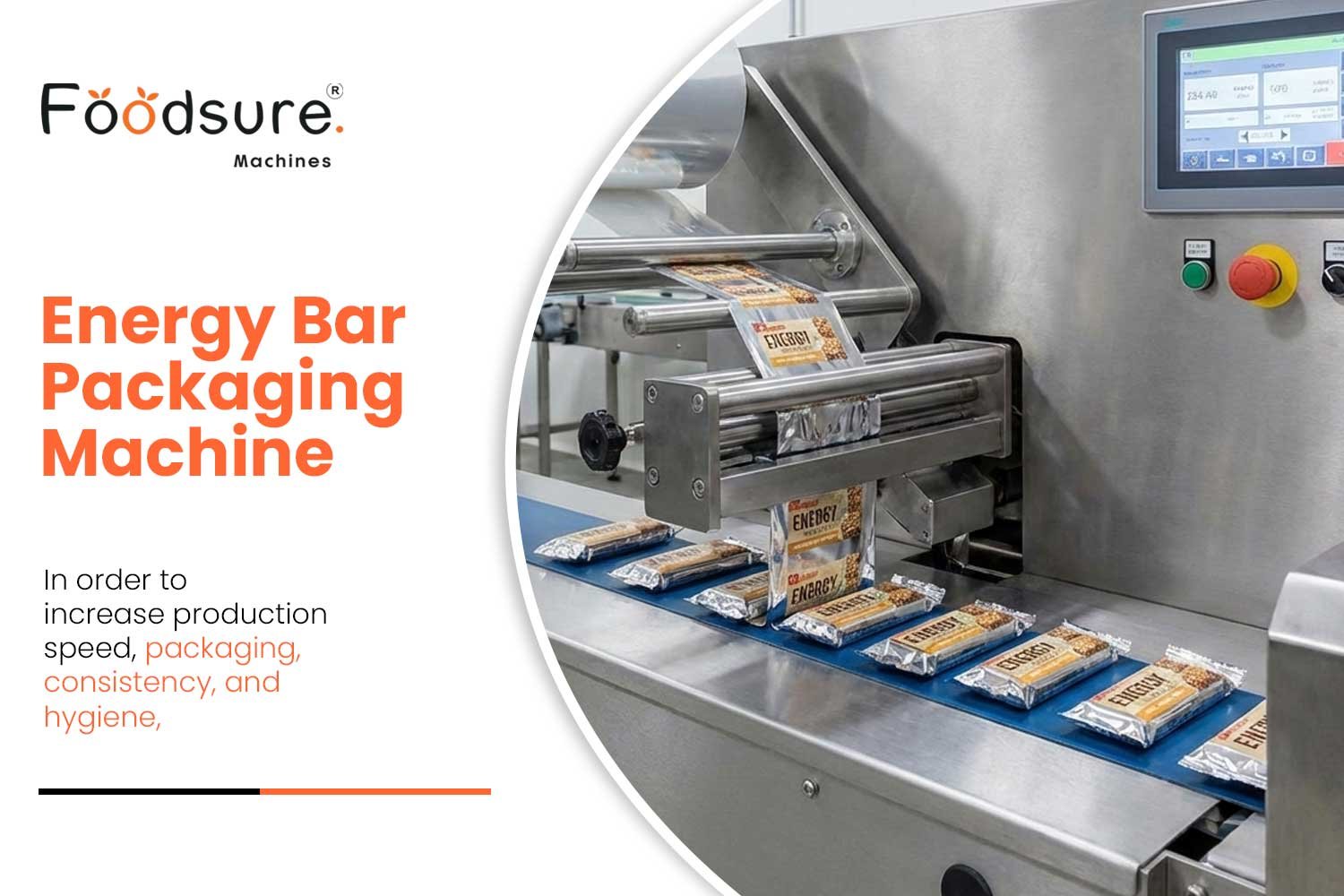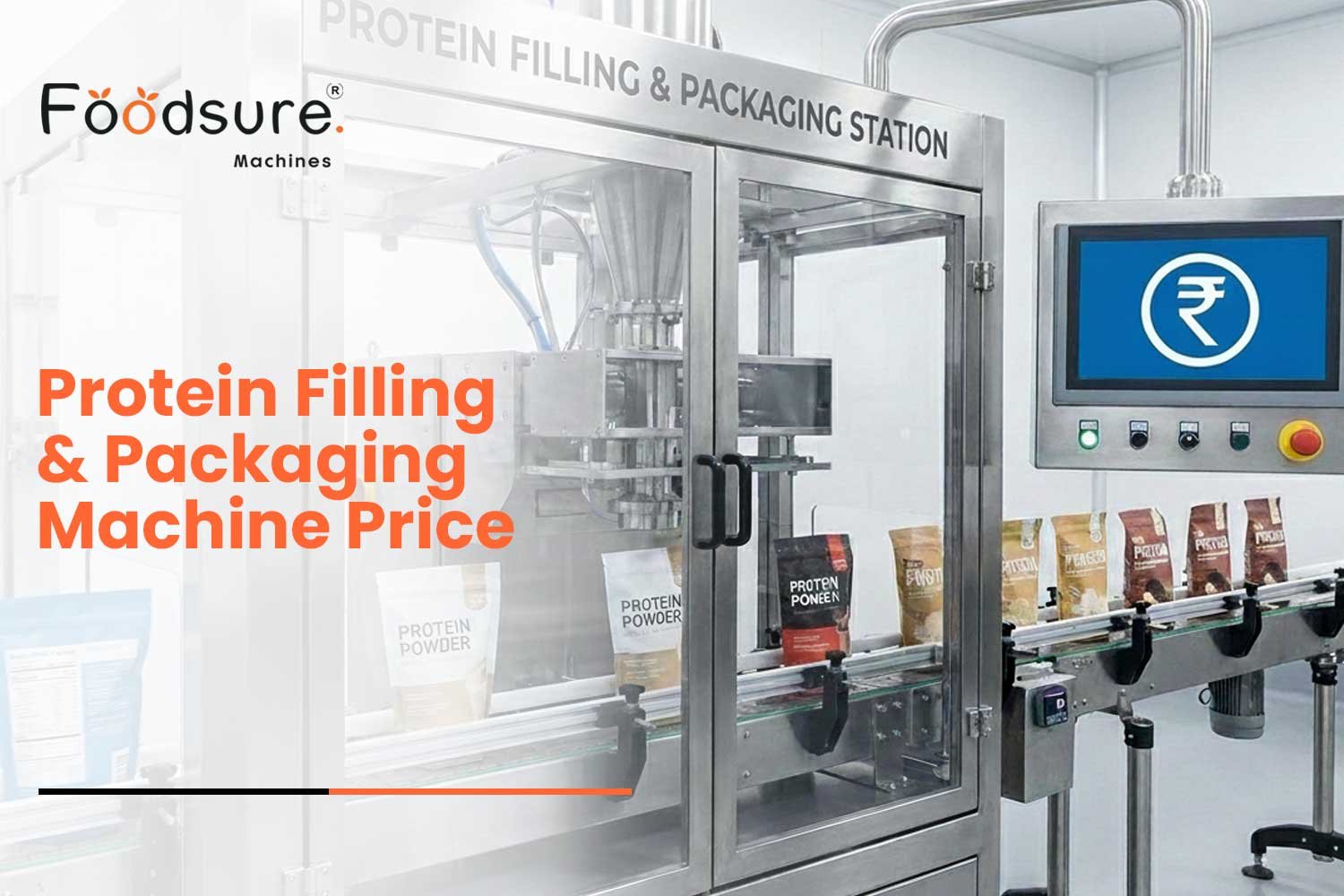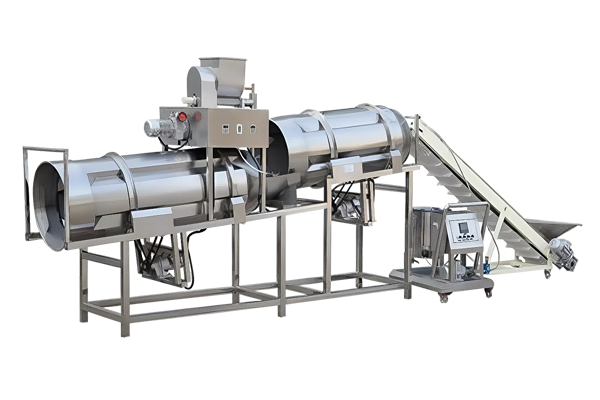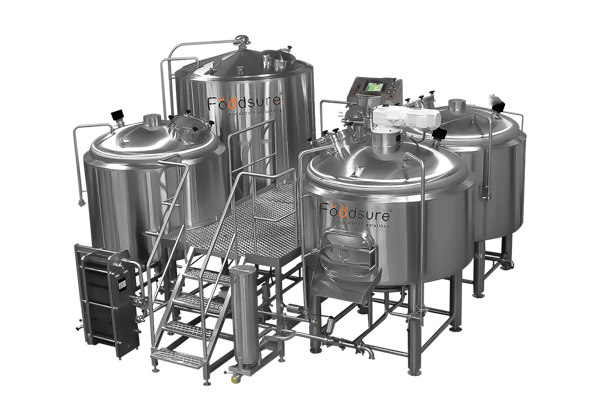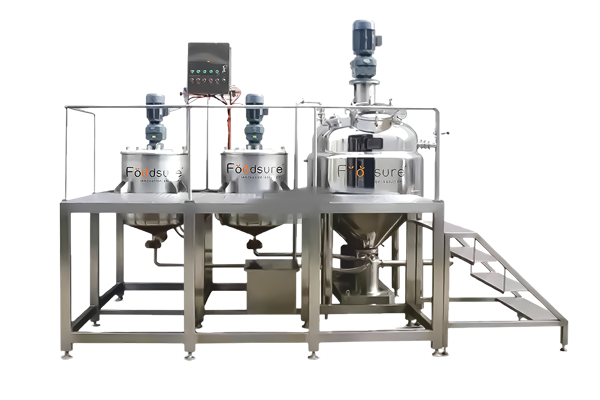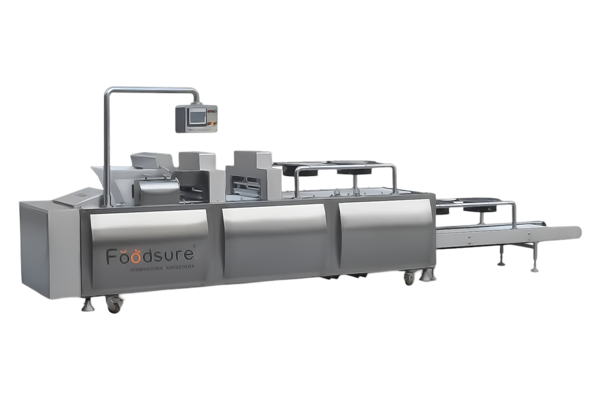When manufacturers step out into the healthy snack category, they quickly get caught on one big question: should they get an energy bar machine or a protein bar machine? They look similar, but they are built differently, process different recipes, and represent a different investment. Choosing the wrong one can lead to wasteful spending or constant downtime.
This guide breaks down energy bar and protein bar machines in simple terms, so you can figure out which one actually fits your factory setup.
Why Energy Bar and Protein Bar Machines Matter for Manufacturers
When factories select industrial equipment for snack bar & health bar production, it can be overwhelming to get wrapped up in specs and prices. The real difference is often in how frequently the machines operate, how quickly they produce bars and whether the finished product meets nutrition and quality goals. To visualize this, let’s break down:
- Equipment selection is a major factor in cost, performance, reliability, and product consistency.
- Protein bar production machinery costs more because it requires stronger mixers and more sophisticated cooling systems.
- An energy bar production line is more flexible to operate and often less expensive.
- The better question is not, “Which machine is better?” but “Which machine is suitable for your product and marketplace?”
- If you make a good decision, there will be fewer breakdowns, higher reliability of production operations, and value will be maximized.
Basically, the answer is simple: energy bar manufacturing equipment are flexible and often cost-friendly; protein bar machines are stronger for dense recipes, but the cost is much higher. The right fit is based on your product and growth needs, not based on better specifications on paper.
Energy Bar Machines Explained
process flow (mixing, extrusion, cutting, coating)
Energy bar machines operate straightforwardly:
- Combine the oats, nuts, and syrups to create a consistent mixture.
- Extrude the mixture into rolls or slabs.
- Slice the slabs into uniform bar sizes.
- If desired, add chocolate or yogurt.
- passing via packaging and cooling tunnels.
This healthy energy bar manufacturing machine process is straightforward, affordable, and productive. Fruit-based goods, cereal bars, granola bars, and other foods that don’t require a lot of protein binding work well with it.
Best suited for small/medium setups
Energy bar machines are a wise initial move if you’re a mid-sized or small factory. They are straightforward to install, operate, and don’t need costly customization. You achieve consistent results while maintaining a reasonable budget.
Protein Bar Machines Explained
Protein bars are more challenging. The powders they contain, such whey or soy, are thick and sticky, which makes mixing more difficult. Because of this, the machinery used to make protein bars is manufactured differently.
- Mixers that stop clumping.
- Extruders with high pressure to force out thick mixtures.
- Cooling tunnels that prevent bars from drooping.
- accurate weight precision cutters.
Given the uniqueness of each recipe, many plants choose tailored protein bar machine solutions to manage particular textures and components.
scalability for large manufacturers
Protein bar machines are the way to go if you’re looking for large-scale manufacturing. Although they are more expensive up front, their consistency, accuracy, and speed make them a worthwhile investment for large manufacturers and exporters.
Read More: How to Start a Protein Bar Business: A Complete Beginner’s Guide
Customization and Recipe Flexibility in Energy and Protein Bar Machines
When buying a snack bar production line, one of the most important things you will want to consider is how well your machine can adapt to your recipes. Every bar is different, so your energy bar and protein bar machines should be able to adapt to what your customers desire.
- Mixing Different Recipes: Both energy bar machines easily process oats, nuts, fruits, and light syrups while protein bar machines are designed for thicker, denser, sticky mixes with protein powders or isolates.
- Changing Batch Sizes: You want to test new flavors or run low batch sizes? energy bar making machine are quick and easy to adjust. Protein bar machines can also adjust for different recipes and run a different recipe without losing consistency and quality.
- Coat Options: A coating of chocolate, yogurt, or protein glaze could also be coated on both machines. Protein bars usually require more precision to avoid cracks or uneven layers.
- Extruding Extra Features: Some factories add special attachments such as hexa-type coating units, cooling tunnels, and automated cutters to provide premium shapes and finishes.
The takeaway? food processing equipment for snack and health bar production that can change recipes and batch sizes will enable faster testing new flavors, meet customer demand, and grow your business without needing to buy a new line every time.
Energy Bar vs Protein Bar Machines – Key Differences
Let’s put Energy Bar and Protein bar production machines side by side.
| Feature | Energy Bar Machine | Protein Bar Machine |
|---|---|---|
| Mixing | Handles light mixes like oats & fruits | Built for dense, protein-heavy mixes |
| Extrusion | Standard forming/extrusion | High-pressure extrusion |
| Cooling | Basic cooling tunnels | Advanced cooling for heavy bars |
| Coating | Handles chocolate/yogurt coatings easily | Needs precise control to avoid cracks |
| Cost | Lower investment | Higher investment |
| Best For | Small/medium setups | Large-scale, export-focused factories |
| Customization | Usually standard models | Often customized for recipes |
How to Choose the Right Machine for Your Business
Buying equipment is more about fit than price. Here is a straightforward checklist before you purchase an energy bar machine for start-ups and factories:
Your decision checklist:
- Are you producing energy bars, protein bars, or both.
- Do you need flexible runs or high volume specialization?
- Current batch size, and how quickly will you scale?
- Does your recipe require a high-pressure extrusion?
- Can you accommodate additional cooling set-ups in your Factory?
- Will you need some component to customize your recipe?
- Local market or export?
Read More: Automatic Vs Semi-Automatic Protein Bar Machines 2025 Ultimate Guide
Protein bar vs energy bar machine: Which Fits You?
Choosing between energy bar and protein bar machines really depends on what you want for your company. If you’re going for quick product launches, lighter recipes, or lower entry costs, an energy bar machine will be the best option. However, if you’re looking for large batches, high protein bars, or to meet export requirements, then a protein bar machine is designed to produce that reliably and easily. For factories that want easily operated, reliable, and supported equipment, Foodsure Machines can provide equipment to produce energy bars or protein bars.
FAQs
Q1. What is the main protein bar vs energy bar machine difference?
A protein bar machine has a stronger extrusion and cooling capability for denser mixes while an energy bar machine is a simpler/cheaper version.
Q2. Can I use one machine for both protein and energy bars?
It’s possible, but usually requires customization. Most factories prefer dedicated lines.
Q3. How much do protein bar machines cost?
There is a range. Small machines can be quite affordable, but export and customization costs significantly more.
Q4. Is an energy bar production line a good fit for a start up?
Yes. Most start ups start with energy bar equipment because it is easier and cheaper to set up.
Q5. Why do factories prefer custom protein bar machine solutions?
Because everyone’s recipe is unique. Customizing equipment ensures the right density, shape and consistency.
Q6. Do energy bar machines cause sugar spikes in the final product?
No, sugar spikes depend on the recipe, not the machine.
Q7. Who uses energy bar-making machines?
Small food factories, startups, and commercial nutrition bar manufacturers.
Q8. What is the difference between an energy bar machine and a protein bar machine?
Energy bar machines handle sticky carb mixes, while protein bar machines handle dense, protein-rich dough.
Q9. How to make an energy bar using a machine?
Load the mix into the hopper, extrude/sheet it, cut, and pack.
Q10. When should you use an energy bar machine?
When producing bars in consistent shape, size, and volume.
Q11. What is the difference between a power bar machine and a protein bar machine?
Power bar machines focus on softer mixes; protein bar machines handle firmer, high-protein dough.
Q12. Do protein bar machines reduce operator fatigue?
Yes , they automate mixing, forming, and cutting.

